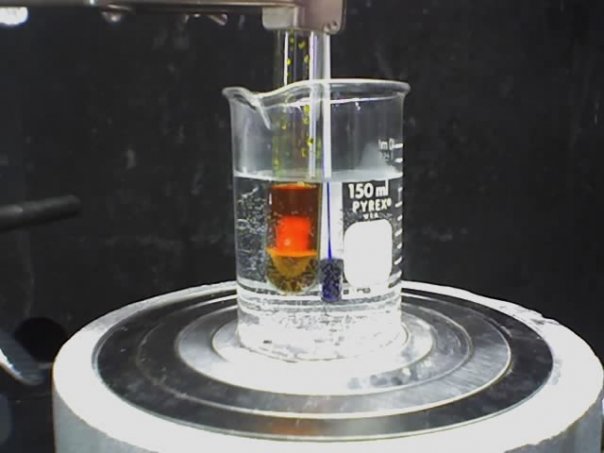For those of us who don’t know any better one must be wondering what all this hullabaloo is about bomb squads descending on schools to remove and destroy old chemical stock. The news has been a washed this week with such reports calling on police to destroy a common lab reagent.

The ‘rogue’ chemical of concern is 2,4-dinitrophenylhydrazine, DNPH, more readily recognised by many students as Brady’s reagent, which is used as a classic organic chemistry identity test for the carbonyl group of aldehydes (breakdown products of a hard night’s session leading to a hangover) and ketones (ingredient in nail varnish remover). This discriminates the carbonyl group from other sources such as carboxylic acids (vinegar), esters (fruity aromas) and amides (proteins).
So why is it that something that’s been ubiquitously used for almost the best part of a century in every chemistry laboratory in schools and universities the world over now causing such a fuss?
Well, problems may arise due to the mishandling, inappropriate storage and poor documentation and management for the requirement that DNPH is kept wet at all times. The issue of concern for DNPH is that the molecule has an inherent level of structural instability that puts it in the explosives risk category, indeed its storage is governed by the Explosives Regulations, the same regulations that are in place to cover fireworks, civil use explosives (demolition), and even the fertiliser, ammonium nitrate.
However, this highly coloured solid, is normally supplied and stored under damp conditions. Actually the commercially supplied DNPH solid material contains by weight up to 33% water. The water is included to prevent it forming a dust mixture with air thus stabilising it and substantially lowering the risk of it undergoing ignition from any source such as a spark or mechanical friction (shock detonation). These wet conditions are maintained by standing the container of DNPH in a small volume of water in a sealed secondary container. Unfortunately, if not properly managed or monitored, some containers may not retain their ability to be airtight, so slow evaporation may occur over a lengthy period of time, and given the frequency of use of DNPH in an educational institution, which would probably be just once or twice a year, that could be just enough time for near complete evaporation.
Typically DNPH would be commercially supplied in small quantities to mitigate against the risk of any large and destructive explosions. So, if not stockpiled, the impact of an explosion from a jar of dry DNPH in a school laboratory should not be too damaging, but still it may pose a serious risk to the personal health and safety of any student/instructor/technician handling the material from heat, shock waves, as well as flying glass or debris from the container. The risk of detonation may come from the potential mechanical friction between the lid and container and any encrusted DNPH powder residing between the threads on opening the evaporated container.
Like food and fashion, chemicals have their best-by date too.
Rate and Review
Rate this article
Review this article
Log into OpenLearn to leave reviews and join in the conversation.
Article reviews
We have technology now to show video of the more dangerous processes
Also many technicians and teachers inherited substances from previous years and had no clear guidance on which ones should be sent for disposal.
It would also help if information was easily available for changing personel to be acess at any time